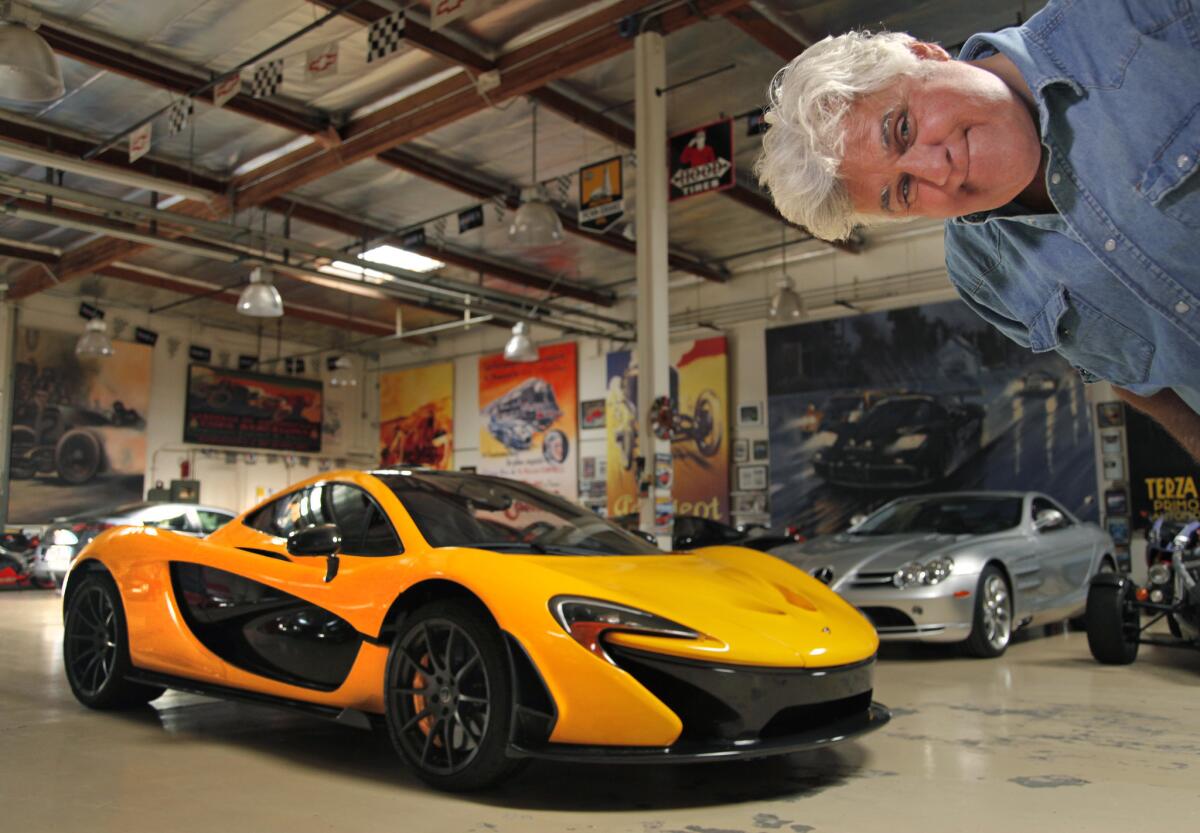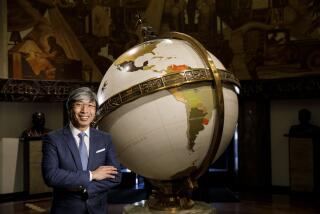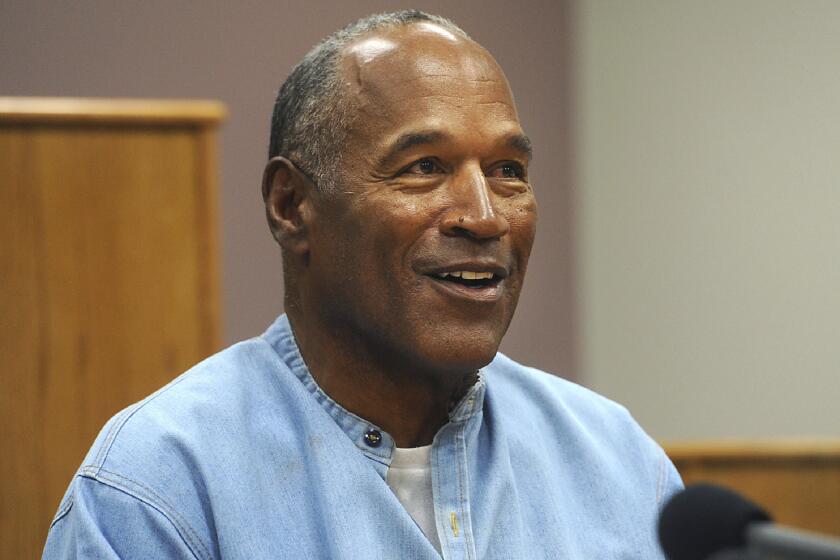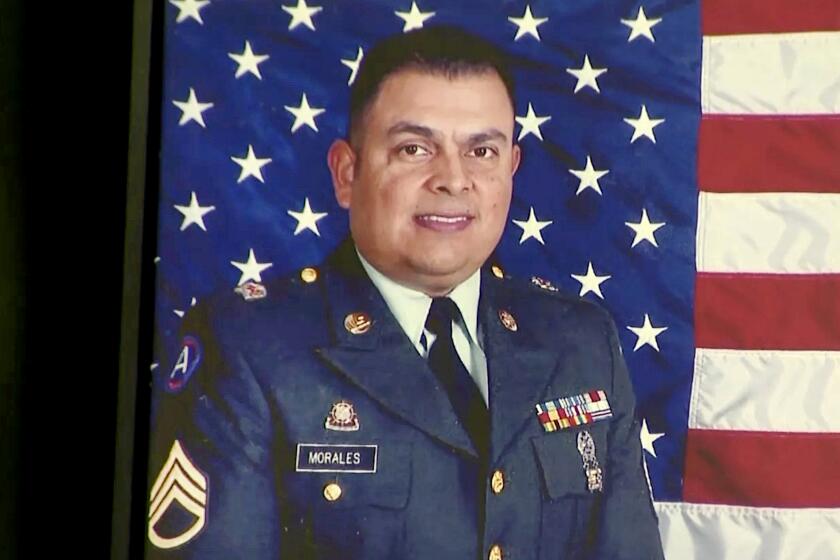Setting Times stories to music: From Radiohead to Jim Croce

My desk at The Times faces out onto Spring Street and LAPD headquarters. Normally it’s a pretty dull view, a lot of gray concrete and slim ribbons of glass.
But around 4:30 each afternoon, something quite wonderful happens: The shadow of what must be the flag on top of The Times building appears on the side of the HQ just in my line of vision. And if there’s a breeze, the shadow dances.
But what really amazes me is that it dances to the beat of whatever song I happen to be listening to. Slow, fast, changes in tempo – the flag stays with the song. I’m both delighted and a bit unnerved by it.
The shadow only lasts a few minutes -- yes, about the length of a song -- and then disappears as the sun moves toward toward the west.
Here’s to the ephemeral beauty in our lives. Like the Great Reads that end up in the recycling bin. (Sob! But they last forever online.)
Anyway, in these roundups of the week gone by, I’d like to offer the first paragraphs of each Great Read (or, as they’re known in print, Column One) -- maybe they’ll buy your eye and you can settle in for a good weekend read. And you’ll also get the songs that inspired me while editing the stories, or reading them later if my fellow editor Millie Quan ushered them through. A story soundtrack!
#
Passion and love drive Jay Leno to fill a 130-car garage
On a sunny day in the Burbank hills, Jay Leno’s canary yellow McLaren supercar shatters the silence.
Wedged into the cockpit of the 903-horsepower hybrid P1, Leno darts around a curve and leans into the throttle. With the midday roads free of traffic, the $1.2-million McLaren surges through the canyon with a controlled fury.
“I just can’t stop driving it,” Leno says at a stop sign, before roaring off again. “It’s just a perfect blend of science and technology.... And you get the anthropomorphic sounds of the engine breathing.”
Back in Burbank where the drive started, a nondescript hangar next to the airport houses Leno’s enviable collection of 130 cars, 93 motorcycles and a menagerie of engines, spare parts and memorabilia. The world knows Leno from late-night TV and stand-up comedy, but within car circles, Leno and his collection eclipse even his contribution to the annals of television.
“The Tonight Show” was a job. Cars are an obsession.
Most blue-chip car collectors focus on a particular marque or era and curate it like artwork. Jerry Seinfeld, for instance, sticks to Porsches. Local businessman Peter Mullin prefers French art deco cars and keeps his in a museum. Leno’s friend and neighbor, Bruce Meyer — board vice chairman at L.A.’s Petersen Automotive Museum — is into American hot rods.
Leno takes a more organic approach: He just buys what he likes, across a seemingly limitless spectrum of styles, eras, cost, countries of origin and methods of propulsion. He’s keen on cars with an intriguing back story, or those marking an engineering milestone.
But mostly Leno just buys cars he wants to drive. He finds it silly to collect cars purely for show.
“I never thought of it as a collection,” said Leno, looking over the rows of neatly parked classics. “Probably in the mid-1980s, I just started to keep stuff.”
The simple strategy has since filled a warehouse with one of the world’s most valuable and eclectic collections.
#soundtrack: “Car Song,” by Elastica. Gotta love a video that ends with the band defeating Godzilla.
#
Hollywood cameraman insists he invented the celebrity selfie in 1981
In the photographs, Lester Wisbrod is a constant: He always appears on the right, with a big smile and a satisfied look about him. On the left, a cavalcade of famous faces flashes by: Clint Eastwood, Jennifer Aniston, Charlton Heston, Renee Zellweger.
The A-listers look perfect, captured in a single moment of stardom. But as the photos flip by, it is Wisbrod who captivates. Crow’s-feet deepen. Hair turns gray. Jowls set in.
It is a portrait of a life — an unvarnished one.
For more than two decades, the longtime Hollywood cameraman snapped photographs of himself and celebrities he’d meet on television sets. In all, Wisbrod has about 150 of the shots, most of them taken in the days before digital cameras, never mind mobile phones with front-facing lenses.
Ellen DeGeneres’ famous photo of herself with several actors at the Oscars — which was actually snapped by Bradley Cooper — became the quintessential selfie in an Instagram world of cellphone auteurs, self-obsessed teens and celebrity culture. But Wisbrod insists he invented the celebrity selfie. And now he wants his due.
“Generally I am not that ostentatious,” said Wisbrod, now 67 and semi-retired. “It just seems like it is bad form to be bragging. But what the hell.”
Wisbrod began taking the photos in 1981, shortly after the introduction of Canon’s Sure Shot 35-millimeter compact camera, one of the first autofocus models to hit the market. It would allow him to take a self-portrait that he could count on being in focus.
Still, his first Sure Shot selfie — with humorist Art Buchwald — came out blurry. But Wisbrod quickly got the hang of it, and termed the images “silly shots,” though his friends would eventually call them “Lesters.”
The photographs capture Hollywood in all of its mystifying allure. For every enduring star there’s a has-been, and plenty of former cultural touchstones who long ago faded to obscurity.
#soundtrack: “Photographs and Memories,” by Jim Croce. I’m not necessarily a big fan, but there’s nice wistful feel here.
#
From foes to brothers in arms: Ukraine police and protesters unite
“Run for cover, everybody; get the hell out of here, on the double!” the leader of the commando unit shouted over his shoulder to the men behind him, his voice echoing eerily in the pitch-black basement. “It is a booby-trap. Watch your step for more wires as you go!”
Panting, swearing, stumbling, falling and rattling with all kinds of firearms, the other fighters rushed to hide behind walls of adjacent rooms, the beams of their flashlights making herky-jerky patterns in the darkness.
As the squad’s explosives expert carefully cut the tiny strings connecting the booby trap inside a Russian army ammo box, Vadim Lisnichuk, the leader of the Ukrainian Interior Ministry unit, gently lifted the lid to find a neatly packed hand grenade.
“One more gift from our big brother up north,” he joked, sweating profusely as the device planted by pro-Russia separatists was being disarmed.
Lisnichuk hasn’t always been a respected combat leader. A few months ago, the 36-year-old had an advertising career in the city of Chernivtsi in western Ukraine. Then he joined the protests in Kiev’s Independence Square, popularly called Maidan, that brought down the government of President Viktor Yanukovich.
“Maidan was a kind of a spiritual festival held on another planet,” Lisnichuk said. “It helped us tear up our puppet strings and feel the taste of real freedom for the first time.”
Armed with sticks, Molotov cocktails and homemade shields, he and thousands of other protesters fought riot police equipped with truncheons, stun grenades and high-caliber rifles in the bloody battlefield that was Maidan.
Now Lisnichuk has joined forces with the same riot police who once opposed him, becoming unlikely comrades in arms against a common enemy: the separatists who until recently made this eastern town their stronghold in their bid to break away from Ukraine and join Russia.
#soundtrack: “Contrabanda,” by Devotchka. I’ve always liked the band’s melodramatic Slavic vibe, and thought this line, in particular, worked with the story: “Are you still with me, or against me?”
#
In Kenya, Somalis at refugee camp languish with limited options
At night he dreams of the sea.
As a young man, Noor Hassan Shanglo spent years working on cargo ships that carried apples and oranges from South Africa to ports across Europe and the Middle East. He fell in love with the blue waves and the bright streets of Sicily, Durban and Dubai.
Now he lives in a place where food does not grow and sand blows constantly, shading the sky gray. It has been 22 years since he last saw the ocean.
He did not come here by choice. Nobody does.
When civil war erupted in his native Somalia in 1991, Shanglo and his family escaped across the Kenyan border and took shelter near the tiny town of Dadaab at what was supposed to be a temporary refugee camp.
“We thought in one or two years, peace would prevail and we would go back,” Shanglo said.
But the conflict continued. And what started as a few tents clustered on a bone-dry stretch of Kenyan desert grew into the largest refugee complex in the world.
Today more than 356,000 people, most of them ethnic Somalis, live in five camps spread over 20 square miles. Shanglo, who is 65 now, with a thin white beard, lives in a camp called Dagahaley.
In some ways it is like any other town, with schools, mosques, cemeteries and orderly rows of mud plaster homes, each with a yard protected by a crude stick fence. In the bustling commercial district, shops sell clothing and electronics made in China. The refugees have organized their own system of governance, with fiercely fought election campaigns complete with candidate debates.
But any normality ends there.
#soundtrack: “(Nice Dream),” by Radiohead. Here Thom Yorke does it solo. That voice is otherworldly.
#
Longtime Southern California poet takes his act to Vegas
The old poet is dressed in black, his platinum-blond hair rakishly moussed. He stands amid the hubbub, facing a stern test of his crafted words and carnival-barker delivery.
The venue is a smoky lounge called Ichabod’s, east of the Strip. Drinkers stare zombie-like at TV screens and bar-top poker machines, laughing too loudly, lost in a heady haze of alcohol and another Vegas night.
Certainly no place for a performing poet. But Lee Mallory feels right in his element.
He wanders a tiny dance area for an hour channeling his idol, infamous booze-bard Charles Bukowski, with an arsenal of racy shock speak. He looms in people’s faces, challenging the yakkers at the back bar.
“Hey!” he shouts. “I’m talking up here!”
To a bass-guitar back beat, he delivers a series of word-images that resonate in Sin City. About lust and excess. About “the secret in the skirts; the blessed yes.” The self-proclaimed “Love Poet” calls “yes” the loveliest word in the English language.
Mallory moved here from Southern California last year with a Quixote-like plan: to reign as the king of poetry in a desert resort town without an attention span, a place that refuses to feign interest in anything without an over-under.
For the Ichabod’s gig, he almost rented a limo and two strippers. “A poet who’s reading in Vegas better arrive in a limo,” he said. “You’re going up against Cirque du Soleil and strip clubs like Little Darlings. Nobody cares about poetry, so you better have a shtick. You have to be a zealot.”
But poets are not usually wealthy men: He eventually dropped the limo-stripper idea because the stunt was too pricey.
#soundtrack: “Your Love Is Like Las Vegas,” by the Thrills. Love how the opening chords are like the ones in Bacharach/David’s “24 Hours from Tulsa.” The album this song is on never fails to get me in a good mood.
#
If you have ideas for story soundtracks of your own, tweet the title and artist to @karihow or @LATgreatreads with the hashtag #soundtrack.
More to Read
Start your day right
Sign up for Essential California for news, features and recommendations from the L.A. Times and beyond in your inbox six days a week.
You may occasionally receive promotional content from the Los Angeles Times.






